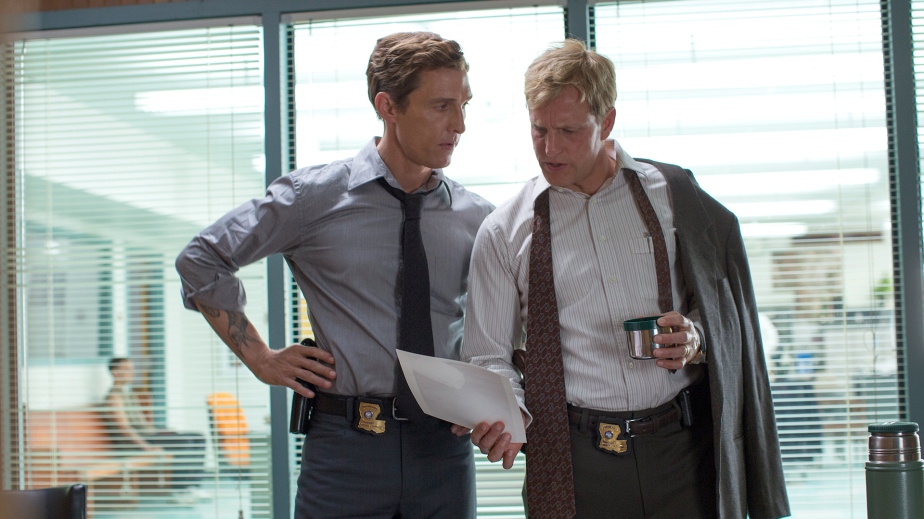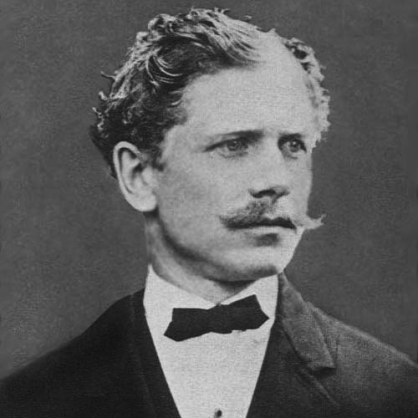
Rust Cohle (Matthew McConaughey) and Marty Hart (Woody Harrelson)
In a world of endless entertainment, through Netflix, HBO, and Hulu, viewers require more than the average TV show or movie. Viewers require a show with a gripping story that keeps the viewer wanting more. After thousands of hours of binge watching Netflix and HBO shows, the one show that stuck with me the most was season one of True Detective. Nic Pizzolatto (the creator of the show) put on a marvelous spectacle that keeps the viewer on the edge of their seat until the very end of the last episode. The show’s magnificent storytelling answers most questions, leaving the viewer satisfied with the ending, yet still wanting more.
If you have not seen all of season one, then stop reading and go watch it! (spoilers ahead)
Pizzolatto starts the show off with two story lines that are bound to intersect at some point, the search for the truth and the escape from the truth. The interviews and storytelling of Rust Cohle (Matthew McConaughey) and Marty Hart (Woody Harrelson) lead the viewer down the winding path of a 17-year-long, unsolved murder mystery in Louisiana. The recollections of Rust and Marty often mention a religious force that seems to block them from finding the truth.
The development of the plot takes many twists and turns leading the viewer to attempt at predicting the end of the mystery. Pizzolatto chose a risky writing style where the recollections of two detectives tell the story. The constant back and forth between the flash backs of two characters could easily confuse the reader. However, the literary perfection of Pizzolatto was able to keep the viewer on track through these stories never allowing them to become disinterested.
The final episode “Form and Void” wrapped up the main plot better than I could have ever hoped. From the fast-paced action shots to the depictions of the sadistic cult of Carcosa and gruesome lifestyle of Errol Childress (The Yellow King). Pizzolatto is able to bring the scenery depicted by Ambrose Bierce, in An Inhabitant of Carcosa, to life. As the camera follows Rust moving surreptitiously through the front yard of Childress’ home, we can feel how the man in Bierce’s short story felt while traversing through the burial site of the ancient city Carcosa. “So old seemed these relics, these vestiges of vanity and memorials of affection and piety, so battered and worn and stained — so neglected, deserted, forgotten the place, that I could not help thinking myself the discoverer of the burial-ground of a prehistoric race of men whose very name was long extinct.” (Ambrose Bierce).
Pizzolatto spins the mythos of Carcosa (Bierce, 1886) and the king in yellow (Robert Chambers, 1895) into a theological cult of serial killers and rapists who claimed victims for decades. Pizzolatto shows just enough disturbing imagery for the viewer to cover their eyes while leaving just enough space between the fingers to not miss a single scene. Pizzolatto uses powerful storytelling to keep his viewers invested in the plot and the characters entwined within it. Pizzolatto is able to turn the fast-paced descriptive writings of 19th century science fiction writers into an original script comparable to the level of storytelling of Bierce, Chambers, and Lovecraft. This idea of using disturbing imagery relates to the idea of how whiplash gets its message across as talked about by Dominic in his analysis.

Pizzolatto doesn’t use just gruesome imagery to tell his story, but light of a bond between the truth seekers (Marty and Rust) that battles the darkness of a cult that tries to mask the truth. Pizzolatto takes the descriptiveness of science fiction writing and adds to it by giving depth to his characters, adding to its fantastic storytelling. After Rust and Marty survive death and escape the hospital, the deeper meaning of the story is revealed.
“I tell you Marty I been up in that room looking out those windows every night here just thinking, it’s just one story. The oldest.” Rust says. “What’s that?” asks marty. “light versus dark.” Rust replies.
“Well, I know we ain’t in Alaska, but it appears to me that the dark has a lot more territory.” Marty says.
“You’re looking at it wrong, the sky thing.” Says Rust. “How’s that?” asks Marty. “Well, once there was only dark. You ask me, the light’s winning.” Rust answers.
When broken down, Pizzolatto’s plot is nothing new. It’s just another story about light versus dark. Pizzolatto could have simply told the story the way Rust and Marty reported to the investigators, to shed light on a topic. However, the way the writer uses a fast-paced and descriptive style of writing to pull viewers in makes the show seem like more than just a simple story. The ability of making a simple story interesting is hard to do. Jessica talks about how spotlight was able to do this. Using fast paced and descriptive style of storytelling along with adding depth to his characters, Pizzolatto is able to create a show that keeps its viewers entertained for eight hours.
_________________________________________________________________
Works Cited
“AN INHABITANT OF CARCOSA.” An Inhabitant of Carcosa / Bierce. N.p., n.d. Web. 30 Jan. 2017.
“True Detective: Form and Void (1.8).” Daily Kos. N.p., n.d. Web. 30 Jan. 2017.
“True Detective: S 1 Ep 03 The Locked Room.” HBO. N.p., n.d. Web. 30 Jan. 2017.
Romano, Andrew. The Daily Beast. The Daily Beast Company, n.d. Web. 30 Jan. 2017.
